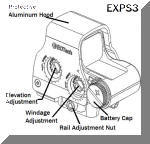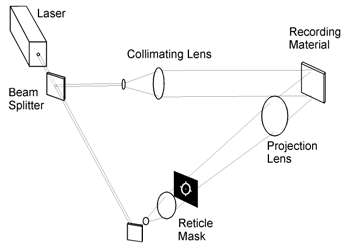EOTech HWS with PVS-14 Monocular on an M-16 Flattop
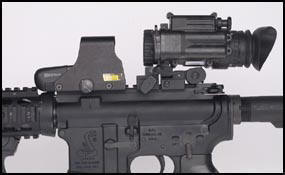
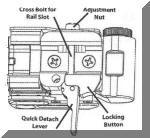 The typical configuration is with both the monocular night vision system and the HWS mounted in tandem on the weapon's receiver. Operators can also witness the holographic reticle with head/helmet mounted monocular night vision image intensifier systems, even on a partial cheekweld on the weapon's stock. This allows the operator added flexibility and greater versatility when deploying with night vision systems in the ever changing battlefield environments.
The typical configuration is with both the monocular night vision system and the HWS mounted in tandem on the weapon's receiver. Operators can also witness the holographic reticle with head/helmet mounted monocular night vision image intensifier systems, even on a partial cheekweld on the weapon's stock. This allows the operator added flexibility and greater versatility when deploying with night vision systems in the ever changing battlefield environments.
HWS Features
Electronic Features

The HWS uses state-of-the-art digital electronics design. Twenty brightness levels ensure proper brightness control in either low light or very bright sunlight. An on-board microprocessor provides automatic battery check indicator, up/down brightness scrolling and programmable auto shutdown features. All electronics are fully encapsulated in shock absorbing resin compound.
The HOLOgraphic Advantage
The holographic patterns have been designed to be instantly visible in any light, instinctive to center regardless of shooting angle, and to remain in view while sweeping the engagement zone. Reticles are designed as large, see-through patterns to achieve lightning quick reticle to target acquisition without covering or obscuring the point of aim.
Heads Up, Full View
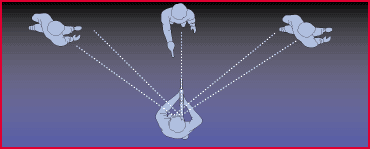
The HWS employs a true Heads-Up Display that eliminates blind spots, constricted vision, or the tunnel vision associated with tube sights. All user controls are flush to the HWS's streamline housing with no protruding knobs, battery compartments or mounting rings blocking vision at the target area. True, 2 eyes open shooting is realized. Instant threat identification is achieved by maximizing the operator's peripheral vision and ultimately gaining greater control of the engagement zone.
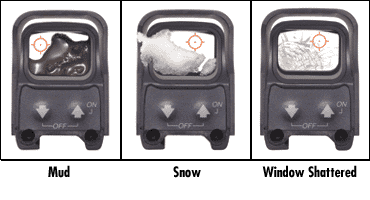 The Magic of Holography
The Magic of Holography
In holography, all the information required to reconstruct the reticle image is recorded everywhere in the Heads-Up display window. If the window is obstructed by mud, snow, rain, etc., the HWS remains fully operational , with point of aim/impact being maintained. Even in such extreme cases where the laminated window is shattered, the HWS is fully functional! As long as the operator can see through any portion of the window, the entire reticle pattern is visible on target...the operator can still engage with confidence.
HWS Benefits
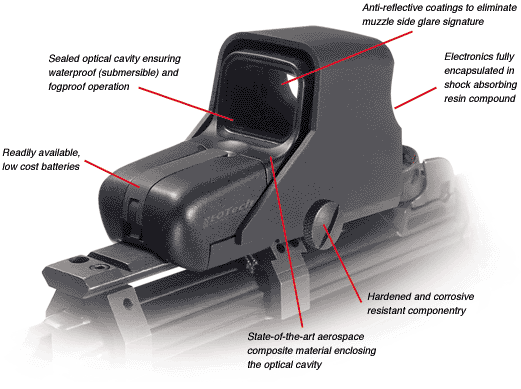 Extreme Durability
Extreme Durability
The HWS has been designed and tested to provide consistent, reliable performance even in the most hostile operational environments. It is waterproof, fog proof, shockproof, and temperature proof.
The HWS is designed to withstand Mil-Spec drop tests and still remain fully operational and hold zero. The HWS has been extensively tested in a punishing recoil simulator generating 3,500 G's of acceleration in less than 0.5 milliseconds (the recoil of a .454 Casull revolver) as well as various environmental chambers).
The Heads Up Display is constructed with a 3 layer, shatterproof laminate glass that is 3/16" thick for added durability. Additional protection of the Heads Up Display is provided with a "roll bar" ruggedized hood.
No Revealing Signature
The HWS does not emit any muzzle side position revealing light signature...the projected reticle pattern is visible only to the operator. Even Gen III night vision equipment cannot detect muzzle side signature of the operator's position.
All optical surfaces are flat and treated with anti-reflective coatings eliminating additional muzzle side signature due to reflective glare. No need for costly glare elimination filters that reduce the effective light transmission and further dim the target area.
Field of View: Aimpoint Comp and EOTech HWS
 The EOTech advantage is clear to see. EOTech's HWS's field of view is nearly 4 times as wide as the Aimpoint Comp M2's. The greater field of view means improved situational awareness and faster threat identification. The HWS offers 10 night vision reticle settings compared to the Aimpoint Comp's four settings.
The EOTech advantage is clear to see. EOTech's HWS's field of view is nearly 4 times as wide as the Aimpoint Comp M2's. The greater field of view means improved situational awareness and faster threat identification. The HWS offers 10 night vision reticle settings compared to the Aimpoint Comp's four settings.
Aimpoint Comp
EOTech HWS
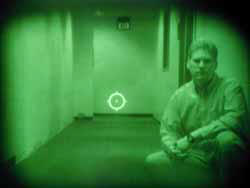 * These photographs are not altered. Both images were taken through an ITT AN/PVS-14 Monocular mounted 2" behind the optic. The camera was an equal distance from the PVS-14.
* These photographs are not altered. Both images were taken through an ITT AN/PVS-14 Monocular mounted 2" behind the optic. The camera was an equal distance from the PVS-14.
*This model is controlled under the Export Administration Regulations (EAR) ECCN 0A987, and may not be exported to a Foreign Person, either in the U.S. or abroad, without a license or exception from the U.S. Department of Commerce.


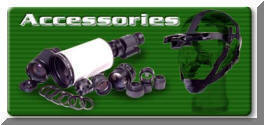
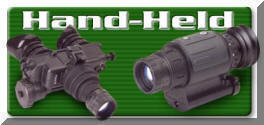

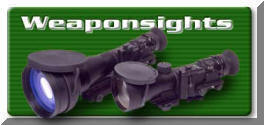
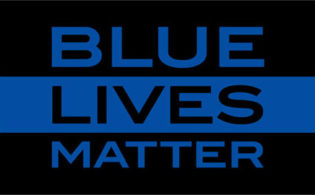






 These EOTech sights are proudly manufactured in the USA
These EOTech sights are proudly manufactured in the USA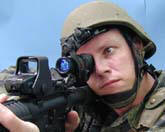 The XPS3 HOLOgraphic Weapon Sight (HWS) is fully compatible with all generation levels of night vision intensifier tubes. A special night vision (NV) setting allows the operator to immediately drop the brightness intensity of the holographic reticle to eliminate any "halo" effect while viewing through an image intensifier tube. The XPS3 can be positioned in tandem behind night vision intensifiers without any "bloom" of the target area. Now, operators can combine the proven night vision technological advantage with a superior close quarters weapon optic to achieve greatly enhanced weapon aiming - in complete darkness.
The XPS3 HOLOgraphic Weapon Sight (HWS) is fully compatible with all generation levels of night vision intensifier tubes. A special night vision (NV) setting allows the operator to immediately drop the brightness intensity of the holographic reticle to eliminate any "halo" effect while viewing through an image intensifier tube. The XPS3 can be positioned in tandem behind night vision intensifiers without any "bloom" of the target area. Now, operators can combine the proven night vision technological advantage with a superior close quarters weapon optic to achieve greatly enhanced weapon aiming - in complete darkness.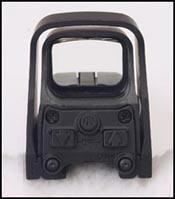 Unlike active IR laser pointer systems, the HWS is a passive system and emits no muzzle-side signature. While in the NV mode, the HWS not detectable by enemy night vision surveillance systems, providing operators with a stealth means for effective nighttime weapon aiming.
Unlike active IR laser pointer systems, the HWS is a passive system and emits no muzzle-side signature. While in the NV mode, the HWS not detectable by enemy night vision surveillance systems, providing operators with a stealth means for effective nighttime weapon aiming.
